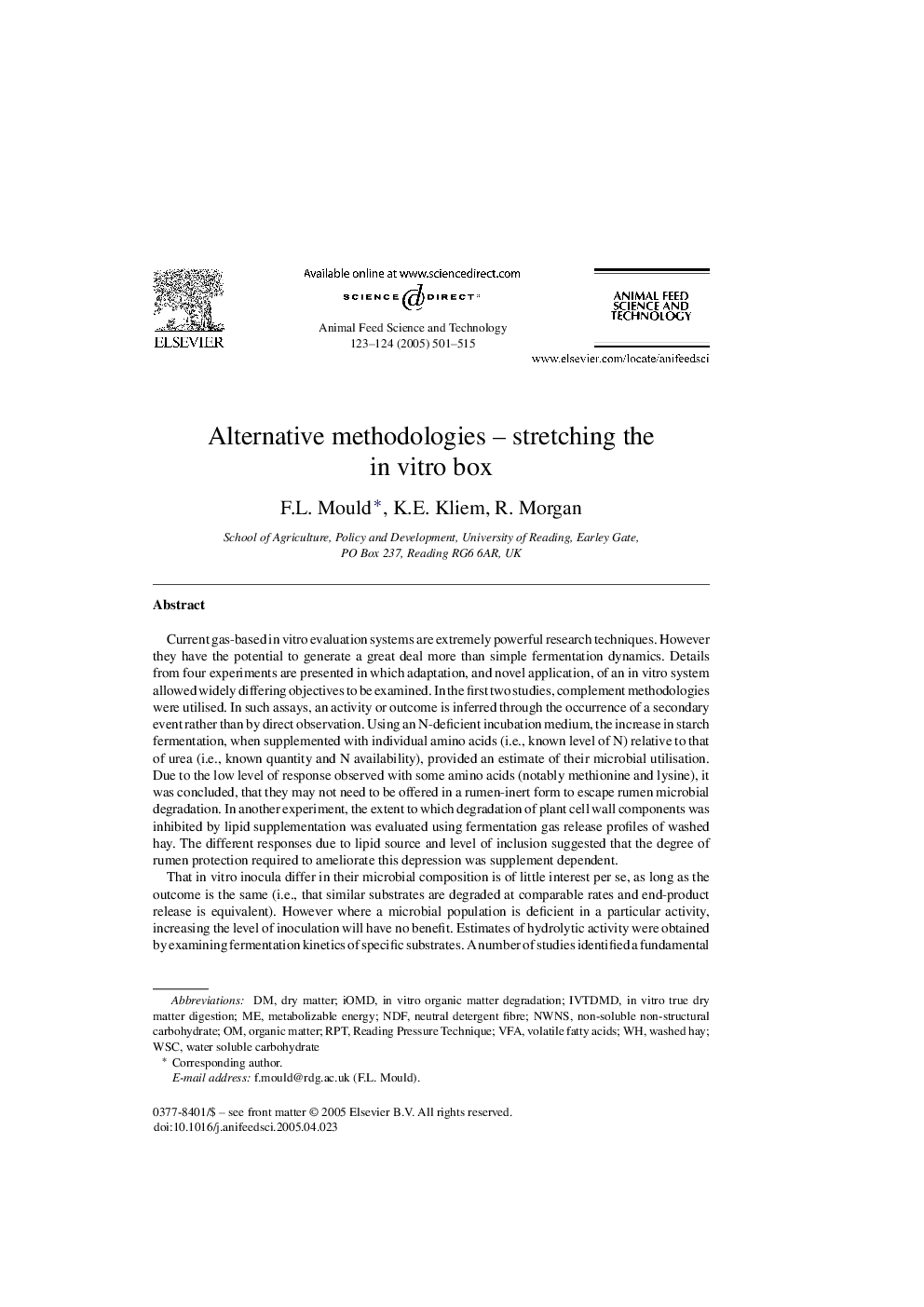| Article ID | Journal | Published Year | Pages | File Type |
|---|---|---|---|---|
| 9916633 | Animal Feed Science and Technology | 2005 | 15 Pages |
Abstract
That in vitro inocula differ in their microbial composition is of little interest per se, as long as the outcome is the same (i.e., that similar substrates are degraded at comparable rates and end-product release is equivalent). However where a microbial population is deficient in a particular activity, increasing the level of inoculation will have no benefit. Estimates of hydrolytic activity were obtained by examining fermentation kinetics of specific substrates. A number of studies identified a fundamental difference between rumen fluid and faecal inocula, with the latter having a lower fibrolytic activity, which could not be completely attributed to microbial numbers. The majority of forage maize is offered as an ensiled feed, however most of the information on which decisions such as choice of variety, crop management and harvesting date are made is based on fresh crop measurements. As such, an attempt was made to estimate ensiled maize quality from an in vitro analysis of the fresh crop. Fermentation profiles and chemical analysis confirmed changes in crop composition over the growing season, and loss of labile carbohydrates during ensiling. In addition, examination of degradation residues allowed metabolizable energy (ME) contents to be estimated. Due to difficulties associated with starch analysis, the observation that this parameter could be predicted by difference (together with an assumed degradability), allowed an estimate of ensiled maize ME to be developed from fresh material. In addition, the contribution of the main carbohydrates towards ME showed the importance of delaying harvest until maximum starch content has been achieved.
Keywords
Related Topics
Life Sciences
Agricultural and Biological Sciences
Animal Science and Zoology
Authors
F.L. Mould, K.E. Kliem, R. Morgan,
